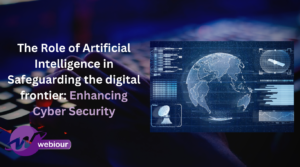When the term “hacker” is mentioned, it is often associated with negativity and illegal activity. However, not all hackers are villains. In fact, there are two distinct categories of hackers: criminal hackers and ethical hackers. It is important to understand the difference between the two and dispel the myth that all hackers are malicious. In this blog post, we will define hacking, explore the negative connotations surrounding it, and differentiate between criminal and ethical hacking. By the end, you will have a better understanding of the nuances within the field of hacking and how it is not always as black and white as it may seem.
Criminal Hacking
Criminal hacking, also known as black hat hacking, involves the use of computer systems and networks for illegal purposes. This can include activities such as stealing sensitive information, spreading malware, and disrupting computer systems. Some examples of criminal hacking include:
- Identity theft: Hackers may steal personal information such as social security numbers, credit card numbers, and addresses for the purpose of identity fraud.
- Phishing scams: Hackers may send fake emails or texts that appear to be from legitimate sources in an attempt to obtain sensitive information or trick users into downloading malware.
- Ransomware attacks: Hackers may encrypt a victim’s files and demand payment in exchange for the decryption key.
The consequences of criminal hacking can be severe. In addition to facing legal penalties, individuals who engage in criminal hacking may also face social and professional consequences. Their actions can lead to damage to a company’s reputation and financial losses, as well as harm to individuals whose personal information has been compromised. It is important to remember that criminal hacking is not a victimless crime and can have serious consequences for all involved.
Ethical Hacking
Ethical hacking, also known as white hat hacking, involves the use of computer systems and networks with the intention of identifying and fixing vulnerabilities. Ethical hackers, also known as security professionals, are hired by organizations to test the security of their systems and protect against potential attacks. Some examples of ethical hacking include:
- Penetration testing: Security professionals may simulate a cyber attack on an organization’s system to identify vulnerabilities and recommend ways to fix them.
- Security audits: Ethical hackers may assess an organization’s security practices and systems to identify any weaknesses and recommend improvements.
- Network mapping: Ethical hackers may scan a network to identify all connected devices and assess the security of each one.
The importance of ethical hacking in cybersecurity cannot be overstated. As cyber threats continue to evolve and become more sophisticated, it is crucial for organizations to have strong security measures in place. By hiring ethical hackers to test and improve their systems, organizations can better protect themselves and their customers against potential attacks. Ethical hacking is a crucial component of maintaining a secure and safe online environment.
The Gray Area
While there is a clear distinction between criminal and ethical hacking, there is also a gray area that exists. “Gray hat” hackers, also known as “white hat” hackers, may engage in activities that are technically illegal, but are done with the intention of identifying and disclosing vulnerabilities to the affected parties rather than using them for malicious purposes.
One example of this is “wardriving,” where a hacker drives around searching for open wireless networks. While accessing someone else’s wireless network without permission is illegal, a gray hat hacker may do so with the intention of informing the network owner of the vulnerability and helping them secure their network rather than using it for nefarious purposes.
There are ethical considerations to take into account when operating in this gray area. While the intention may be to help improve security, the actions taken may still be illegal and could result in consequences. It is important for hackers operating in this space to carefully weigh the potential risks and benefits of their actions and to disclose vulnerabilities in a responsible manner.
In conclusion, it is important to recognize that not all hacking is malicious. While criminal hacking can have serious consequences, ethical hacking is a crucial component of maintaining a secure online environment. Understanding the distinction between the two and the nuances within the field can help to promote a more informed and accurate portrayal of hacking.
Conclusion
In this blog post, we have explored the difference between criminal and ethical hacking and the nuances that exist within the field. Criminal hacking involves the use of computer systems and networks for illegal purposes, such as stealing sensitive information or spreading malware. On the other hand, ethical hacking involves the use of computer systems and networks with the intention of identifying and fixing vulnerabilities. Ethical hackers, also known as security professionals, are hired by organizations to test the security of their systems and protect against potential attacks.
While there is a clear distinction between the two, there is also a gray area that exists. “Gray hat” hackers may engage in activities that are technically illegal, but are done with the intention of identifying and disclosing vulnerabilities to the affected parties. It is important to understand these nuances and recognize that not all hacking is malicious.
Understanding the difference between criminal and ethical hacking is crucial in promoting a more informed and accurate portrayal of the field. By dispelling the myth that all hackers are villains, we can better recognize the important role that ethical hacking plays in maintaining a secure online environment.







